Research Article - (2021) Volume 9, Issue 12
A Descriptive Study to Assess the Knowledge of Protein Energy Malnutrition among the UnderFive Parents in Alandur Community, Chennai
*Correspondence: AR. Bharathi, Department of Nursing, Bharath Institute of Higher Education and Research, Selaiyur, Chennai, Tamil Nadu, India, Email:
Abstract
Aim: of the study will help the nurses to know the level of knowledge of the mothers regarding causes, prevention and management of Protein Energy malnutrition in under five children and emphasis on specific areas of health education to the parents and also communicated to community health nurses to create awareness to the public.
Objectives: To assess the knowledge regarding Protein Energy malnutrition among the under-five mothers in alandur community, find out association between knowledge score and selected demographic variables of under than five mothers in alandur community, and to prepare information booklet about Protein Energy malnutrition.
Methods: A descriptive research approach was used, the sample size consist of 30 under five parents were selected by using convenient sampling technique. Non probability convenience sampling technique was used for collecting data. The level of knowledge among patients was assessed by using self-structured knowledge questionnaires.
Result: the level of knowledge among under five children parents, On the basis of knowledge score 2(7%) had inadequate knowledge, 16(53%) had moderately adequate knowledge and 12(40%) had adequate knowledge.
Keywords
Assess, Marasmus, Kwashiorkor, Knowledge, Protein Energy malnutrition, Under five parentsIntroduction
The World Health Organization (WHO) defines Protein Energy malnutrition as ‘‘the cellular imbalance between the supply of nutrients and energy and the body’s demand for them to ensure growth, maintenance, and specific functions.’’ Although Protein Energy malnutrition is a state of deficiency or excess of energy, protein, and other nutrients, this article deals with under nutrition and specifically protein energy malnutrition (PEM). Children with primary PEM generally are found in developing countries as a result of inadequate food supply caused by socioeconomic, political, and occasionally environmental factors such as natural disasters. Among the four principal causes of mortality in young children worldwide, under nutrition has been ascribed to be the cause of death in 60.7% of children with diarrheal diseases, 52.3% of those with pneumonia, 44.8% of measles cases, and 57.3% of children with malaria. More than 50% of all the childhood deaths are attributable to under nutrition, with relative risks of mortality being 8.4 for severe malnutrition, 4.6 for moderate malnutrition, and 2.5 for mild malnutrition as estimated by analyses of 28 epidemiologic studies done across 53 countries. Most of the deaths (> 80%) occur among those with mild or moderate malnutrition (weight for age 60% to 80%). This is explained by the fact that although the risk of death is greatest for those with severe malnutrition, these extreme cases only make up a small fraction of total number of children. Malnutrition is most widespread condition affecting health of children’s. Unhygienic food practices, lack of money, traditional beliefs and inappropriate diet are resulting in malnutrition. Mothers are primary care taker of children’s because usually the children’s depend on their mothers for fulfilling their needs [1]. Mothers play a vital role in safe guarding their children’s against many disorders.
Once considered a disease of affluence and industrialized nations, PEM is currently emerging as global health problem which is increasing nearly in every country throughout the world, leading to considerable comorbidity and increased mortality. In Tamilanadu the state, despite high education, has a prominent child malnutrition problem. A national family health survey reveals that 23% of children here are underweight, while 25% of Chennai children show moderately stunted growth. (Malnutrition in India statistics. Protein malnutrition is determined at any point in file but prenatally has been shown to have significant lifelong effects. During pregnancy, one should aim for a diet that consist at least 20% protein for the health of the fetus. The benefit of good nutrition during a child formative years cannot be over emphasized. Lack of adequate nutrition can affect a child’s growth and development which includes skills and functionally possesses problems that affect children the most because they have less protein intake. The few rare cases found in the developed world are almost entirely found in small children as a result of fat diets or ignorance of the nutritional needs of children particularly in cases of milk allergy [2].
The results of the study will help the nurses to know the level of knowledge of the mothers regarding causes, prevention and management of protein energy malnutrition in under five children and emphasis on specific areas of health education to the parents, and also it can be communicated to community health nurses to create awareness to the public.
Methodology
A descriptive research approach was used, the sample size consist of 30 under five parents were selected by using convenient sampling technique. Non probability convenience sampling technique was used for collecting data. The study was conducted among under five parents in selected community at Chennai. The selected community are Alandur. Inclusion criteria, Parents who are all having children between 0 to 5 years, Parents who knows Tamil and English, & parents who are willing to participate in study. Exclusion criteria, those who are not present during the time of data collection. Before data collection, the researcher got formal permission from department of nursing and alandur primary health canter by submitting an application giving assurance to abide by the rules and regulations [3].
The data collection period was 1 week. The investigator selected the subjects who were fulfilled the inclusion criteria. Brief explanation was given about the purpose of study. Assurance was given that the data collected from the under-five parents will be utilized only for the purpose of study.
The investigator introduced her to the subjects and collected demographic variables. The investigator used to assess the level of knowledge among patients by using self-structured knowledge questionnaires, interview method to collect the data from subjects. The duration of interview for each subject was about 15 to 20 minutes. Each day around 5 to 10 subjects were interviewed.
Results
The table shows the distribution of 30 subjects according to the demographic variables. On the basis of age group 9 (30%) belongs to 22-25 years of age, 11 (37%) were 26-29 years of age and 10 (33%) were 30-33 years of age. With regard to educational status of subjects 4 (13%) were illiterate, 4 (13%) were completed primary education, 14 (47%) were completed secondary education and 8 (27%) were completed degree holders. In relation to occupation 18 (60%) were employers, 12 (40%) were unemployed.
On the basis of socio economic status 3 (10%) they were belongs to high socio economic status, 23(77%) they were belongs to middle socio economic status and 4(13%) they were belongs to low socio economic status.
Table1: Distribution of subjects according to the demographic variables.
| SI. no | Demographic variable | n | % |
|---|---|---|---|
| 1 | Age (a) 22-25 (b) 26-29 (c) 30-33 |
9 11 10 |
30 37 33 |
| 2 | Education (a) Illiterate (b) Primary (c) Secondary (d) Degree & etc. |
4 4 14 8 |
13 13 47 27 |
| 3 | Occupation (a) employee (b) unemployed |
18 12 |
60 40 |
| 4 | Socio economic status (a) high socio economic status (b) middle socio economic status (c) low socio economic status |
3 23 4 |
10 77 13 |
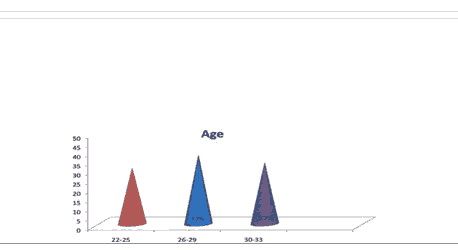
Figure 1: Distribution of subjects according to the age.
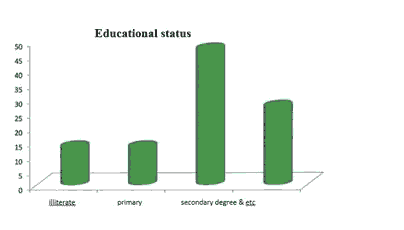
Figure 2: Distribution of subjects according to the educational status.
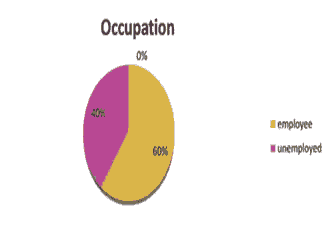
Figure 3: Distribution of subjects according to the occupation.
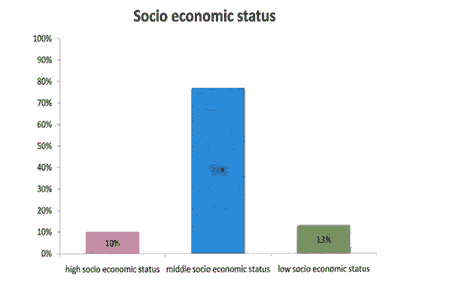
Figure 4: Distribution of subjects according to the socio economic status.
Table 2: Distribution of subjects according to the knowledge scores.
| S.No | Knowledge level (score ) | n | % |
|---|---|---|---|
| 1 | Inadequate | 2 | 7 |
| 2 | Moderately adequate | 16 | 53 |
| 3 | Adequate | 12 | 40 |
Key note:
1. Inadequate knowledge - 0-5 marks
2. Moderate knowledge - 6-10 marks
3. Adequate knowledge - 11-15 marks
Above table describes the knowledge level of parents. On the basis of knowledge score 2(7%) had inadequate knowledge, 16(53%) had moderately adequate knowledge and 12(40%) had adequate knowledge.
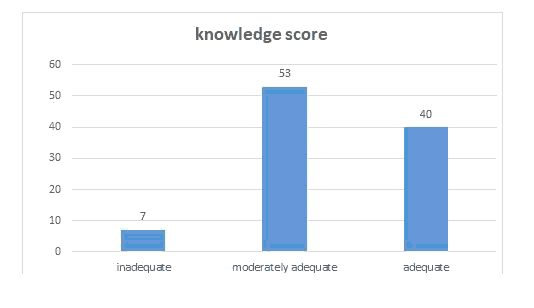
Figure 5: Distribution of subjects according to the knowledge score.
Discussion
In Among 30 subjects, On the basis of knowledge score 2 (7%) had inadequate knowledge, 16(53%) had moderately adequate knowledge and 12 (40%) had adequate knowledge. The chi-square was used to associate the knowledge score with age, education, occupation and socio economic status. The study revealed that there was an association between knowledge of under-five mothers with selected demographic variables like occupation and there was no association between knowledge of under-five mothers with selected demographic variables like age, education and socio economic status [4-5].
Major Findings of the Study
• According to knowledge level of under-five mothers 16(53%) had moderately adequate knowledge.
• According to association between knowledge & demographic variables, there is a significant association between occupations.
Conclusion
Knowledge of under-five mothers helps to identify Protein Energy malnutrition among under-five children earlier & it may reduce the occurrence of complications. The nurse can alleviate the problems of under-five children, Nurses play an important role in guiding underfive mothers to gain knowledge on protein energy malnutrition & to achieve maximum level of health & wealthy life.
Implication
Nurses can improve the knowledge of under-five mothers on Protein Energy malnutrition by giving information booklet. The present study has several implications in community nursing practice, community nursing education; community nursing administration & community nursing research are as follows:
• The study creates awareness among under-five mothers in reducing Protein Energy malnutrition.
• The study can provide a medium for all the Protein Energy malnutrition measures to practice in community settings.
• The study can enhance the knowledge of under-five mothers in applying day to day life.
• Community Nurse Administrator can conduct program for community health personnel to update their knowledge.
• Community Nurse Administrator may motivate and allocate resources for further studies.
Recommendations
• A similar study can be conducted with larger sample to generalize the research findings
• A similar study can be conducted among mothers of school children
• In depth research can be carried out on specific nutrition problem in under-five children’s
• A study can be conducted to assess the prevalence of nutritional problems among under- five children in specific area.
Funding
No funding sources
Ethical Approval
The study was approved by the Institutional Ethics Committee
Conflict of Interest
The authors declare no conflict of interest.
Acknowledgments
The encouragement and support from Bharath University, Chennai is gratefully acknowledged for providing the laboratory facilities to carry out the research work.
References
- Desai, Tara. "A study on the nutritional status of pre primary of children coming to Anganwadi in rural area of Gandhinagar district." Inte J Hom Sci 4, (2018):295-299.
- Halle, Claire, Dowd Toni, Fowler Cathrine, and Rissel Karin, et al. "Supporting fathers in the transition to parenthood." Contemp Nur 31, (2008): 57-70.
- Faruque, Abu Syed Golam, Ahmed AM Shamsir, Ahmed Tahmeed, and Islam M. Munirul, et al. "Nutrition: basis for healthy children and mothers in Bangladesh." Journal of health, population, and nutrition 26, (2008): 325
- Hood, M LH."A narrative review of recent progress in understanding the relationship between tuberculosis and protein energy malnutrition." European journal of clinical nutrition 67, (2013): 1122-1128.
- Omran, M. Louay, and Morley John E. "Assessment of protein energy malnutrition in older persons, Part II: Laboratory evaluation." Nutrition 16, (2000): 131-140.
Author Info
Department of Nursing, Bharath Institute of Higher Education and Research, Selaiyur, Chennai, Tamil Nadu, IndiaCitation: AR. Bharathi A Descriptive Study to Assess the Knowledge of Protein Energy Malnutrition among the UnderFive Parents in Alandur Community, Chennai, J Res Med Dent Sci, 2021, 9(11): 1-5
Received: 01-Dec-2021 Accepted: 15-Dec-2021 Published: 22-Dec-2021
